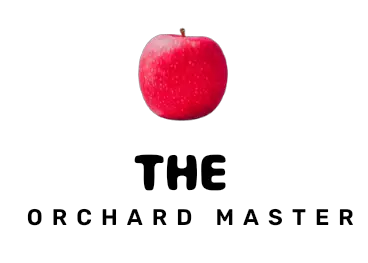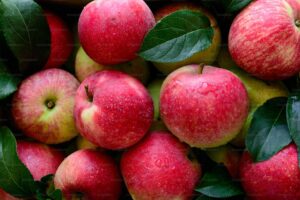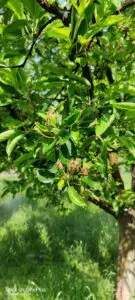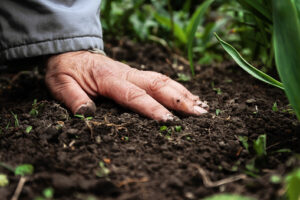Apple orchards are home to many kinds of insects, some of which can cause damage to the trees and the fruit. However, not all insects are harmful. Some of them are natural enemies of the pests and can help control their populations. These beneficial insects include predators, parasitoids, and pollinators. By providing a habitat for these insects, apple growers can reduce their reliance on pesticides and improve their integrated pest management (IPM) strategy.
What are the benefits of beneficial insects?
Beneficial insects can provide several benefits for apple orchards, such as:
- Reducing pest populations and damage by feeding on or parasitizing them. For example, ladybeetles, lacewings, hoverflies, and spiders can prey on aphids, mites, leafhoppers, and caterpillars. Parasitic wasps can lay eggs inside the bodies of codling moths, apple maggots, and leafrollers, killing them from within.
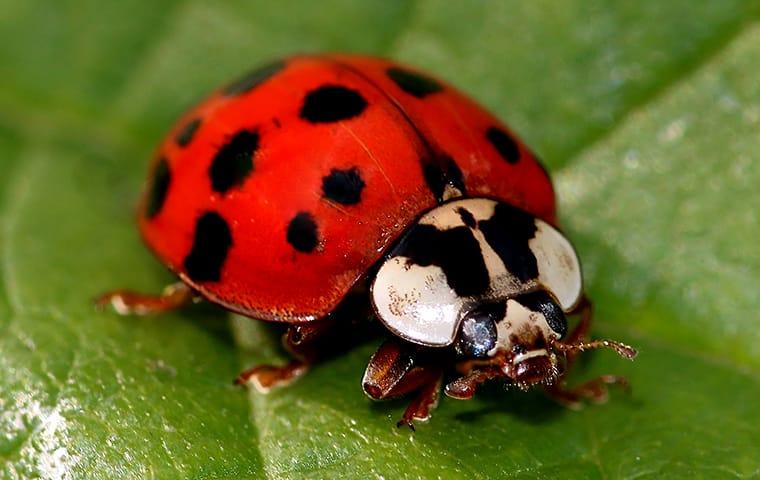
- Enhancing pollination by transferring pollen from one flower to another. This can increase fruit set and quality. For example, honey bees, bumble bees, mason bees, and other native bees can pollinate apple blossoms.
- Increasing biodiversity and ecosystem services by supporting other wildlife and plant species. For example, beneficial insects can provide food for birds, bats, and other animals. They can also help maintain soil health by decomposing organic matter and recycling nutrients.
How to attract and conserve beneficial insects?
To establish and maintain beneficial insect populations in apple orchards, growers can adopt some practices that enhance their habitat and reduce their exposure to pesticides. These include:
- Planting flowering perennials that provide nectar and pollen for beneficial insects throughout the growing season. These plants should have open flower structures and heights between 30-120 cm. They should also be adapted to local soils, climate, and full sun. Some examples of plants that attract natural enemies are yarrow, goldenrod, aster, coreopsis, coneflower, milkweed, and sunflower.
- Creating strips or patches of habitat plantings between or around the orchard rows. These areas should be at least 7 m by 50 m in size. They should be protected from mowing, grazing, or spraying. They should also be diversified with different plant species to support a variety of beneficial insects.
- Preserving natural or semi-natural habitats near the orchard, such as woodlands, hedgerows, grasslands, wetlands, or riparian zones. These habitats can serve as sources of beneficial insects that can migrate to the orchard. They can also provide shelter, food, and overwintering sites for them.
- Reducing or avoiding the use of broad-spectrum pesticides that can harm beneficial insects. Instead, use selective or targeted pesticides that have low toxicity or short residual effects on non-target organisms. Apply pesticides only when necessary and according to label instructions. Monitor pest and beneficial insect populations regularly to make informed decisions.
- Encouraging biological control agents such as predatory mites or parasitic nematodes that can suppress soil-borne pests such as root weevils or apple replant disease. These agents can be introduced or enhanced by applying organic amendments such as compost or mulch to the soil.
Conclusion
Beneficial insects are valuable allies for apple growers who want to reduce pest problems and improve fruit quality. By providing a habitat for these insects in and around the orchard, growers can enhance their IPM strategy and support biodiversity. Beneficial insect habitat is not only good for the environment but also for the bottom line.
